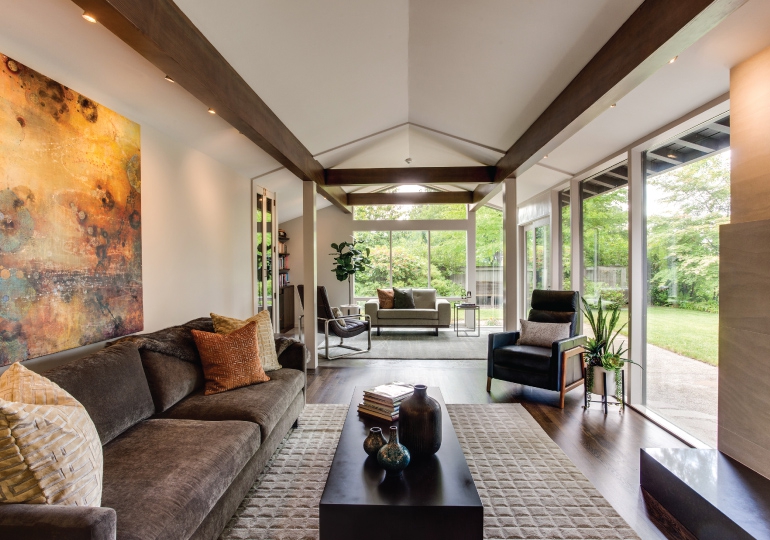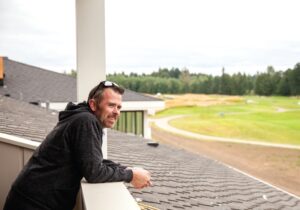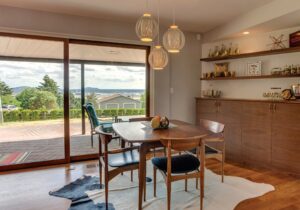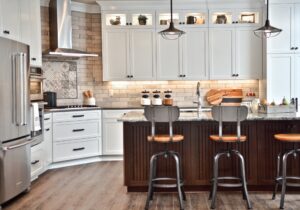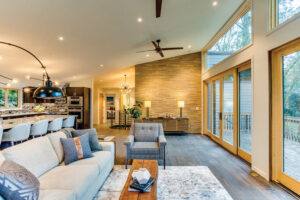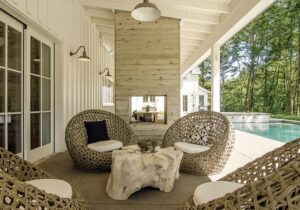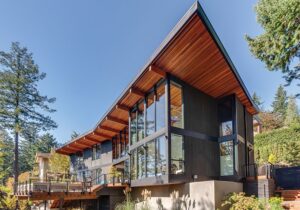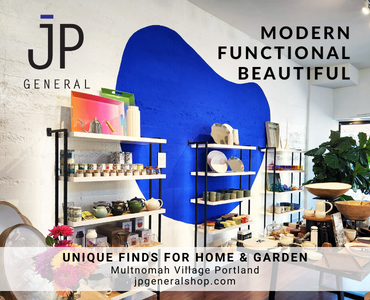This midcentury, postwar classic had once been a proud home in the Bridlemile area on the site of the old Wilcox Estates, but the decades had taken their toll. Built in the Eichler and Rummer style and featured on the cover of Better Homes and Gardens in the late ‘50s, the home had fallen from grace, with grass growing through the floor of the sun room and bamboo shoots working their way up inside the walls. The interior had become disjointed, having experienced a number of ill-conceived remodels over the years that prevented the old house from realizing its full potential.
But for Tim Schouten– principal architect at Giulietti/Schouten AIA Architects, a Portland-based architecture firm designing unique, client-driven projects throughout the Pacific Northwest and nationally– projects like these are about improving the original, not replacing it.
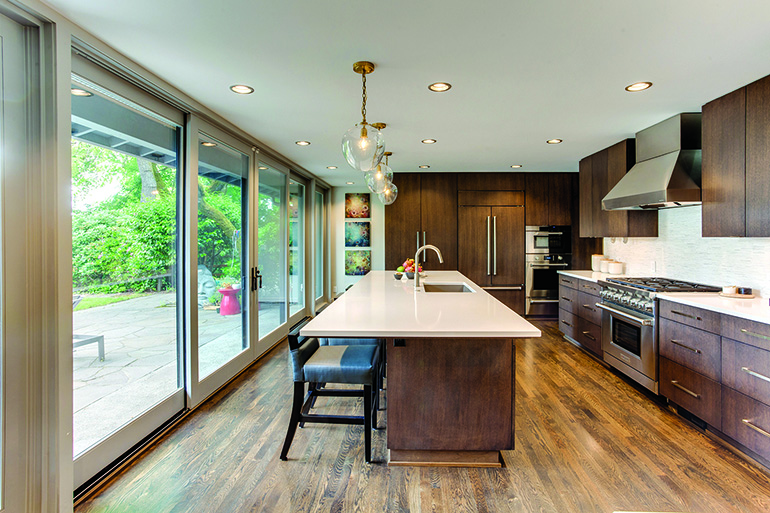
“Appreciate the house for what it is, and don’t try to make it something it isn’t,” Schouten says.
The home, recently purchased by an active couple from the Bay Area, needed to reflect the owners’ modern sensibilities and match their lifestyle. So Schouten partnered with Jeff Johnson of JDL Development, presented fresh new ideas to the owners and got to work.
They started in on the main entrance hallway, narrow, poorly lit and featureless, which set the tone for the entire home. Expanding the hallway wall 18 inches, they added new lighting and full-height built-in cabinets to bring the wood warmth of the kitchen into the hall, along with new DuChâteau® wood accent panels in multiple areas. In the living room, bright concrete tile replaced the red-brick fireplace surround, along with a redesigned hearth for a more modern look. Wendy O’Brien of Wendy O’Brien Interior Planning & Design thoughtfully selected interior finishes, lighting and furnishings.
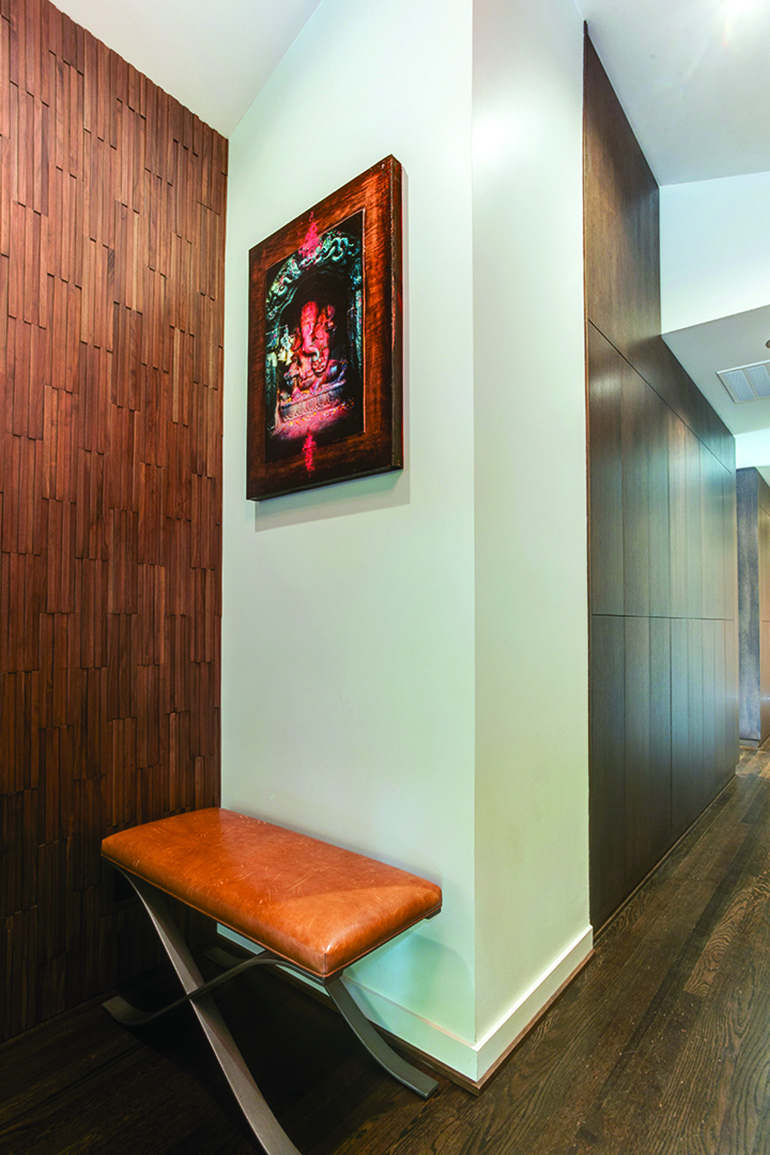
The daylight basement, also part of the whole-house renovation, required the removal of the acoustical tile-dropped ceiling, as well as the removal of a central wall. Adding new structural beams increased head height, and removing the central wall increased natural daylight throughout the lower level. HVAC ducts from the ceiling were rerouted within the perimeter walls and hidden from view. Upstairs, new structural beams and supports were hidden in the ceiling and walls to avoid adding new posts in the middle of the living room and the existing open wood beams were refinished throughout.
“We had to do a lot of hidden gymnastics to make it work,” Johnson says.
But it was the kitchen that presented the greatest opportunity, according to Schouten. The kitchen was undersized with its small peninsula bar, lack of cabinets and uninviting nook.
“The kitchen was dated,” Johnson says. “It was by no means up to modern standards.”
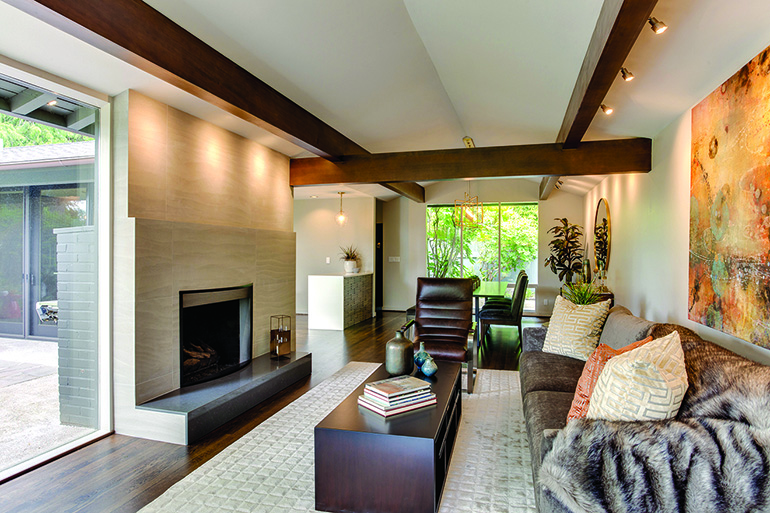
So Schouten replaced it with a central-island kitchen and moved out the exterior wall, adding a large sliding-glass window wall to emphasize the courtyard that had originally been the centerpiece of the home. The central-island kitchen was a key part of the renovation and a reflection of changing times, according to Schouten. Expanding the kitchen into the nook allowed more active seating around the island and provided much more opportunities for storage cabinets opposite the window wall.
In the past, it was all about efficiency, Schouten says. “It was tight, and you got your sink, your range, your refrigerator, your ovens, and storage just wasn’t a big deal then,” he added.
The new kitchen reflects our changing lifestyle and connection to outdoor living.
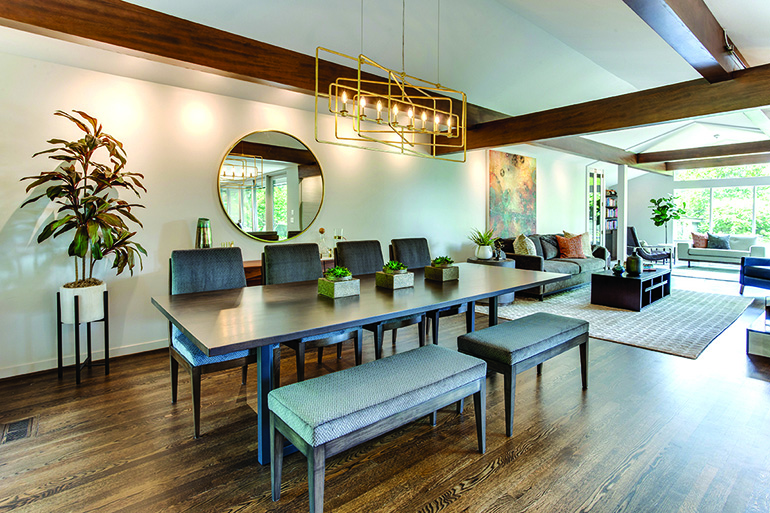
“There was one cook, and that was plenty of space. Now multiple people want to converse in the kitchen, there’s more than one cook.It’s a more active space, it’s not just about working in the kitchen. It’s more about spending more of your day in the kitchen.”
Overall, the house has a very bright and inviting feel, incorporating design touches at once retro and modern.
“The new work really honored the original design,” Johnson says.
>> For more information, visit: jdl.build



